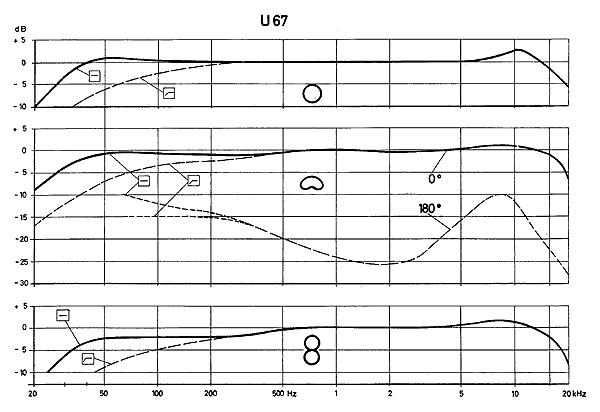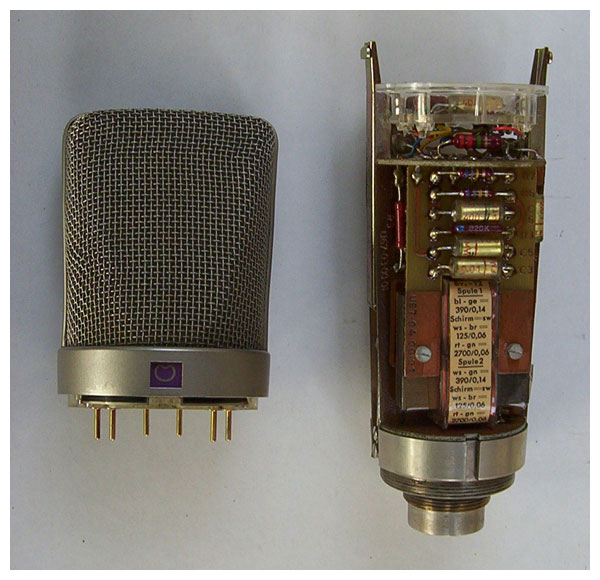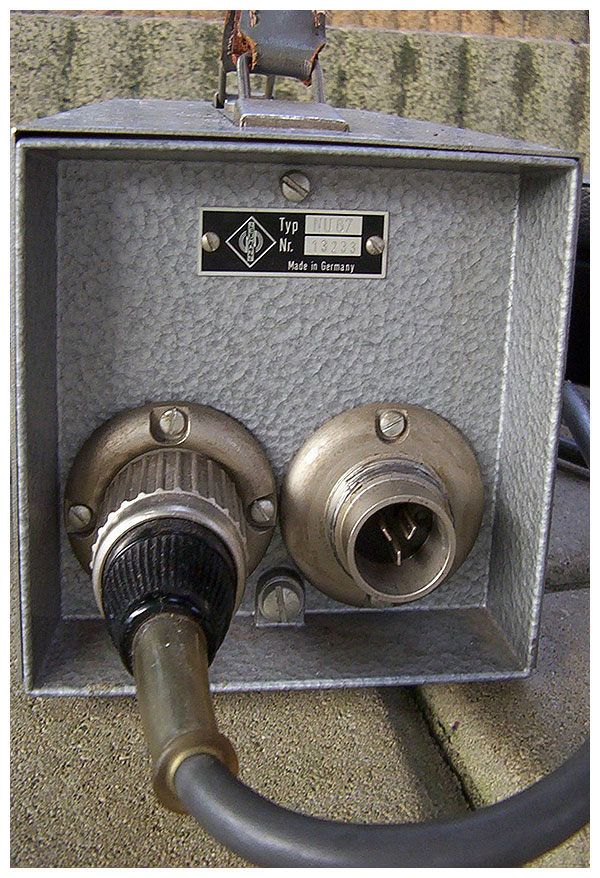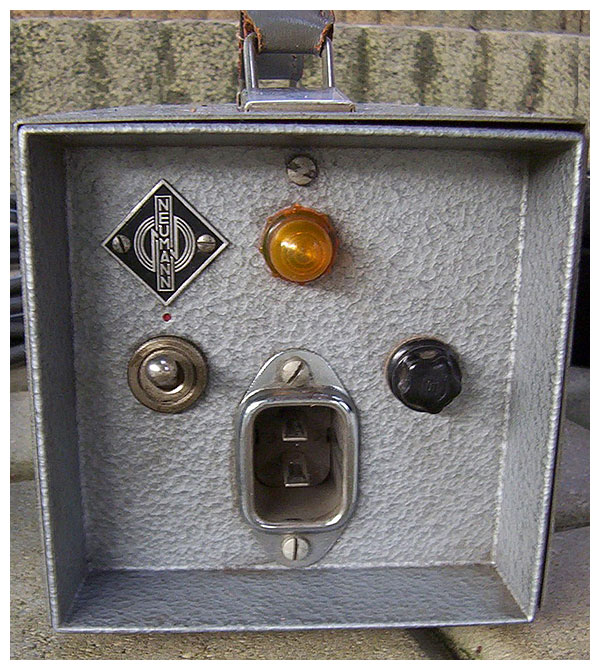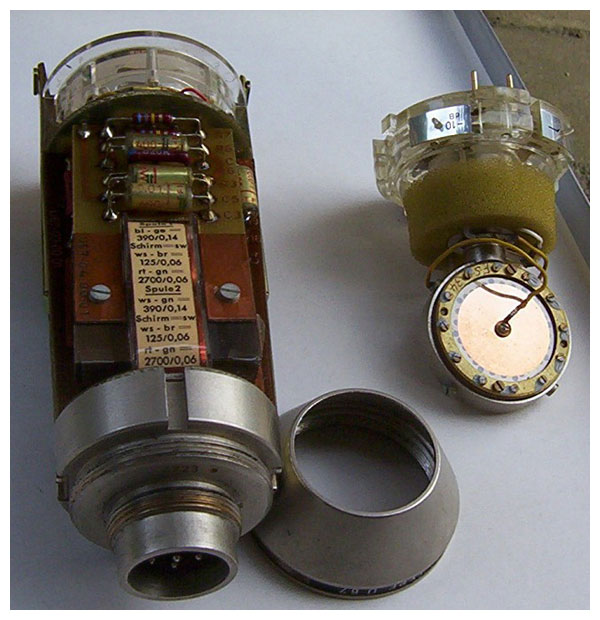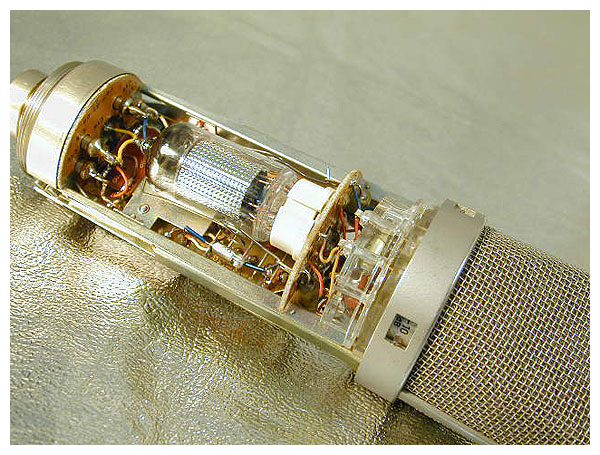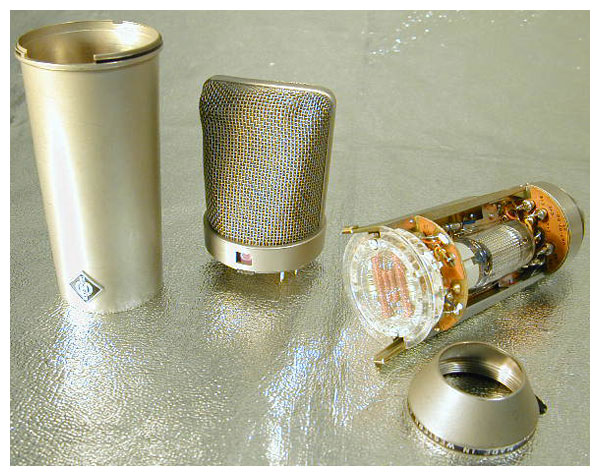
The Neumann Model U 67 (1960-1971)
multi-directional tube condenser microphone



The following text is from the March, 1966 Neumann specifications sheets. The U 67 Condenser microphone is a newly developed multi-purpose studio microphone. It has an attractive shape and possesses first-class transmission properties and a number of new advantages. The U 67 Condenser Microphone can be used in a multitude of cases in recording, broadcasting, and sound reproduction. From a dimension point of view, it lies between the group of miniature microphones and that of the older standard type of condenser microphones. By relinquishing the absolute miniature type of construction, it is possible to use reliable standard components as well as an approved easily replaceable microphone amplifier tube with plug socket, a type which can be obtained all over the world.

By means of three switches, arranged at the base of the head assembly, the three directional characteristics, frequency response, and transmission ratio can be adapted to requirements. The frequency response of the microphone, also in the upper audio range, is practically linear for frontal sound pickup and does not show the commonly found rise. This enables the microphone to be used especially at a short distance away from the sound source without getting an unnaturally sharp sound impression. A new type of circuit considerably attenuates frequencies below 30 c/s already before the control grid of the microphone tube, whilst frequencies above 40 c/s are transmitted unaffected. The often feared overloading of the microphone tube caused by excessive movements of the membrane due to wind, floor vibrations etc. has thus been prevented. This was not possible with the commonly used rumble filters at the output. If the bass attenuation exceptionally is not desired, frequency response of the microphone amplifier can be linearized by disconnecting a small wire bridge in the microphone. The limit frequency of this bass attenuation can be shifted to 100 c/s by means of a switch located on the microphone (favorable e.g. for recording of speech or in television studios).

When the transmission degree of the microphone is reduced by approximately 10 dB by means of the third switch, the microphone amplifier will not be overloaded, even with the highest levels occurring in practice. (Application e.g. with pick-up of loud solo instruments from short distance.) The microphone tube operates as an anode amplifier into an output transformer with separate feedback winding. The microphone amplifier section may be opened easily without the aid of a screwdriver by unscrewing the fastening ring at its base in a counterclockwise direction. This permits the conical housing to be withdrawn. The head assembly may then be removed by pressing lightly against the two lengthwise support rails near the head assembly, releasing the latch and freeing the head assembly for unplugging.

Cables up to 165 feet in length may be used between microphone and power supply. When longer cables are required, the filament potentiometer R6 must be readjusted to bring the filament voltage at the microphone back to −6.3 volts. Consistency of operations is also increased by the following measures: Gold-sputtered polyester foils used as membranes make the unit highly insensitive to temperature, humidity, or aging. Printed circuit used throughout for stability and shock resistance. Great resistance to moisture due to potting of all grid circuit components and use of Teflon tube socket. Protection against RF interference through use of feed-through capacitors on all leads and RF-protected connectors on interconnect cables.



The U 67 microphone may only be used with the NU 67 power supply. The filament voltage is made independent of mains voltage fluctuations by means of a power-type Zener diode. When the microphone is not connected, the power supply unit need not be switched off. Above the plugs for microphone cable and AF output is a pair of plug sockets, which permit the application of a test voltage in series with a 60 resistor.* For this purpose a voltage divider of 10:1 has been inserted, which steps up the input resistance of the test input to 600. The audio output socket is a three-pole connector (Tuchel T 3081). The appropriate line connector (T 3080) will be supplied upon request. The unit is fitted with a standard equipment type mains input socket.
*Ohms? It doesn’t say.



Specifications
- Frequency range: 40 to 16,000 c/s
- Directional characteristics: Omni-directional, Cardioid, Figure 8
- Sensitivity: Omni-directional: 1.1 mV/µb
Sensitivity: Cardioid: 2.0 mV/µb
Sensitivity: Figure 8: 1.4 mV/µb
- Total harmonic distortion: 0.5% up to 116 dB SPL
